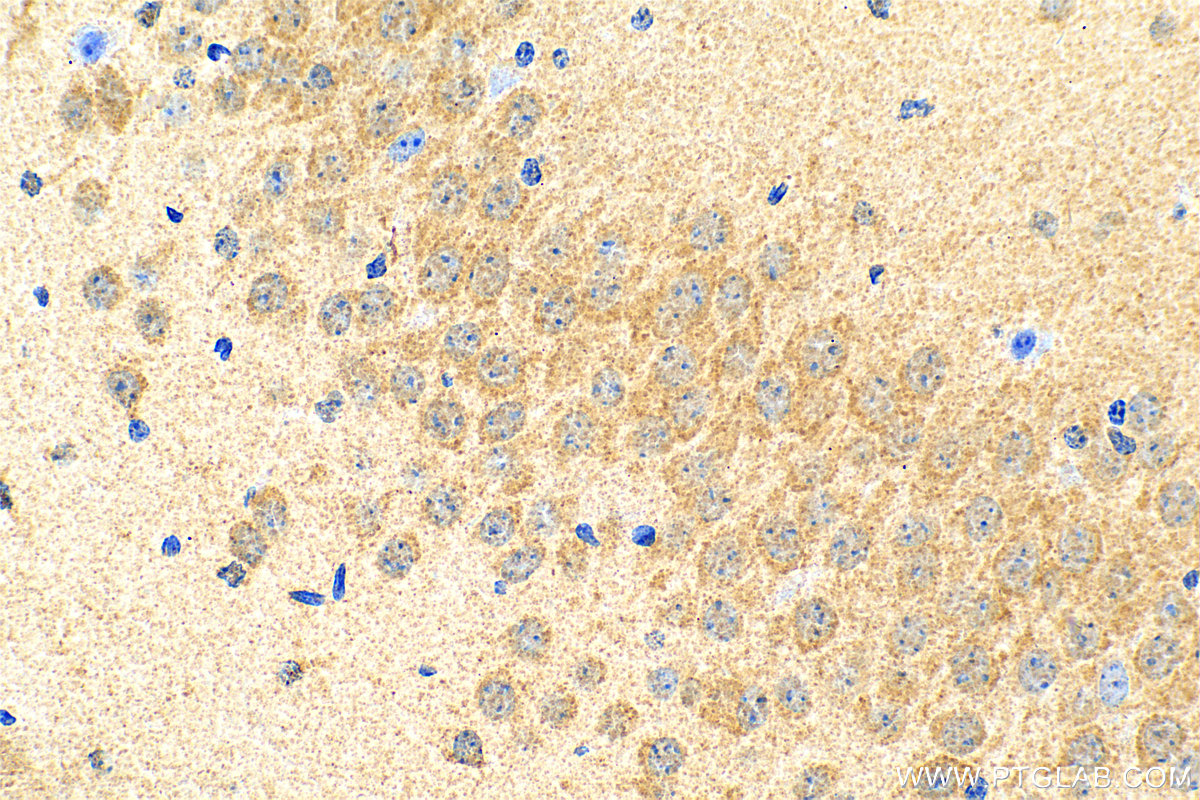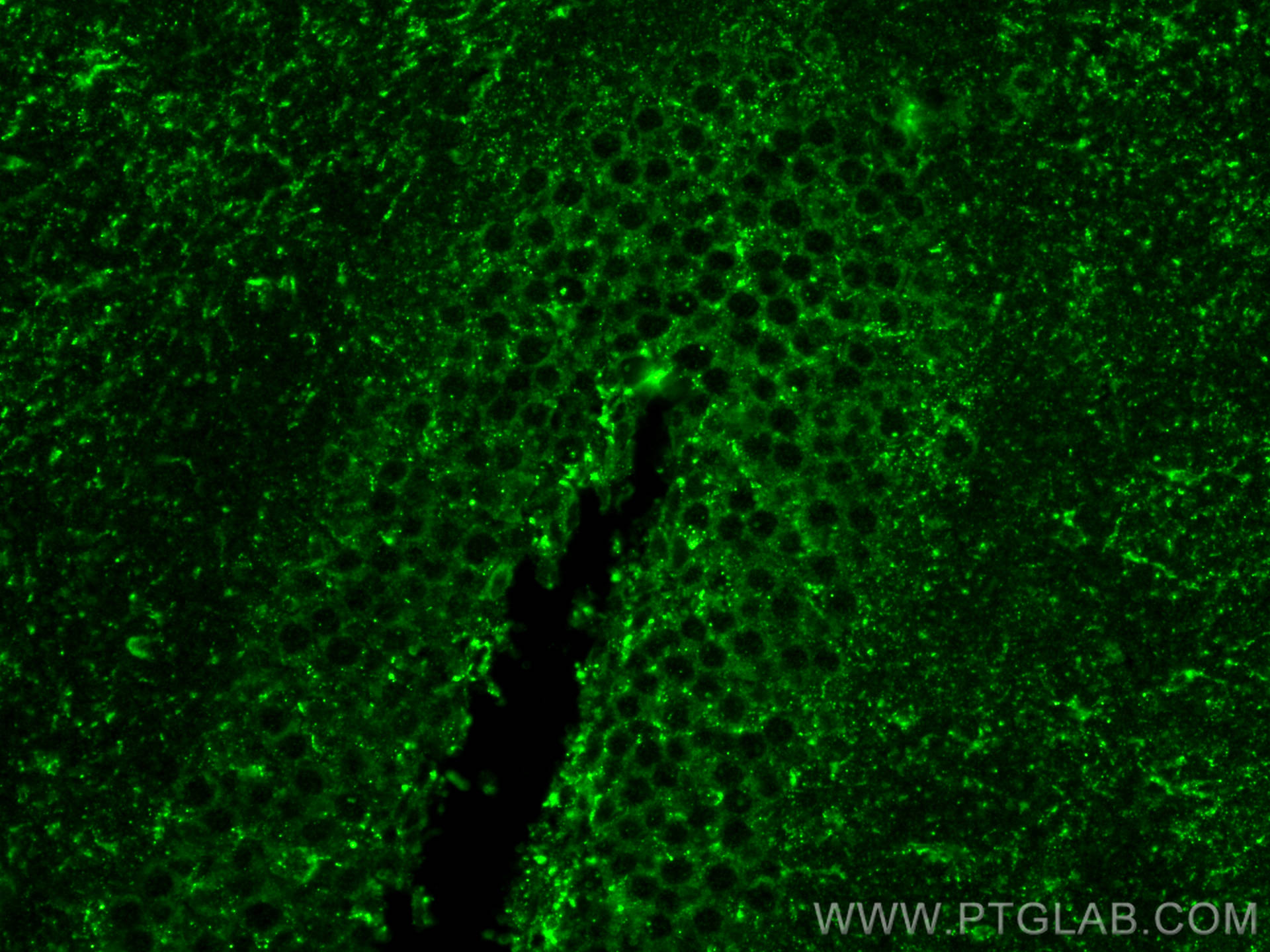验证数据展示
经过测试的应用
| Positive IHC detected in | mouse brain tissue Note: suggested antigen retrieval with TE buffer pH 9.0; (*) Alternatively, antigen retrieval may be performed with citrate buffer pH 6.0 |
| Positive IF-P detected in | mouse brain tissue |
推荐稀释比
| 应用 | 推荐稀释比 |
|---|---|
| Immunohistochemistry (IHC) | IHC : 1:50-1:500 |
| Immunofluorescence (IF)-P | IF-P : 1:50-1:500 |
| It is recommended that this reagent should be titrated in each testing system to obtain optimal results. | |
| Sample-dependent, Check data in validation data gallery. | |
产品信息
31486-1-AP targets SLC38A7 in IHC, IF-P, ELISA applications and shows reactivity with human, mouse samples.
| 经测试应用 | IHC, IF-P, ELISA Application Description |
| 经测试反应性 | human, mouse |
| 免疫原 | SLC38A7 fusion protein Ag35081 种属同源性预测 |
| 宿主/亚型 | Rabbit / IgG |
| 抗体类别 | Polyclonal |
| 产品类型 | Antibody |
| 全称 | solute carrier family 38, member 7 |
| 别名 | SNAT7, Solute carrier family 38 member 7, Sodium-coupled neutral amino acid transporter 7, FLJ12724, FLJ10815 |
| 计算分子量 | 50 kDa |
| GenBank蛋白编号 | BC001961 |
| 基因名称 | SLC38A7 |
| Gene ID (NCBI) | 55238 |
| RRID | AB_3670003 |
| 偶联类型 | Unconjugated |
| 形式 | Liquid |
| 纯化方式 | Antigen affinity Purification |
| UNIPROT ID | Q9NVC3 |
| 储存缓冲液 | PBS with 0.02% sodium azide and 50% glycerol , pH 7.3 |
| 储存条件 | Store at -20°C. Stable for one year after shipment. Aliquoting is unnecessary for -20oC storage. |
背景介绍
SLC38A7 also known as SNAT7, is a system N transporter with a substrate preference for L-glutamine(PMID: 21511949). SLC38A7 symporter that selectively transports sodium ions and amino acids, such as L-glutamine and L-asparagine from the lysosome into the cytoplasm and may participate in mTORC1 activation (PubMed:28416685, PubMed:35561222). colocalization of Slc38a7 with neuronal markers in excitatory and inhibitory neurons, but not in astrocytes or glial cells.
实验方案
| Product Specific Protocols | |
|---|---|
| IHC protocol for SLC38A7 antibody 31486-1-AP | Download protocol |
| IF protocol for SLC38A7 antibody 31486-1-AP | Download protocol |
| Standard Protocols | |
|---|---|
| Click here to view our Standard Protocols |


